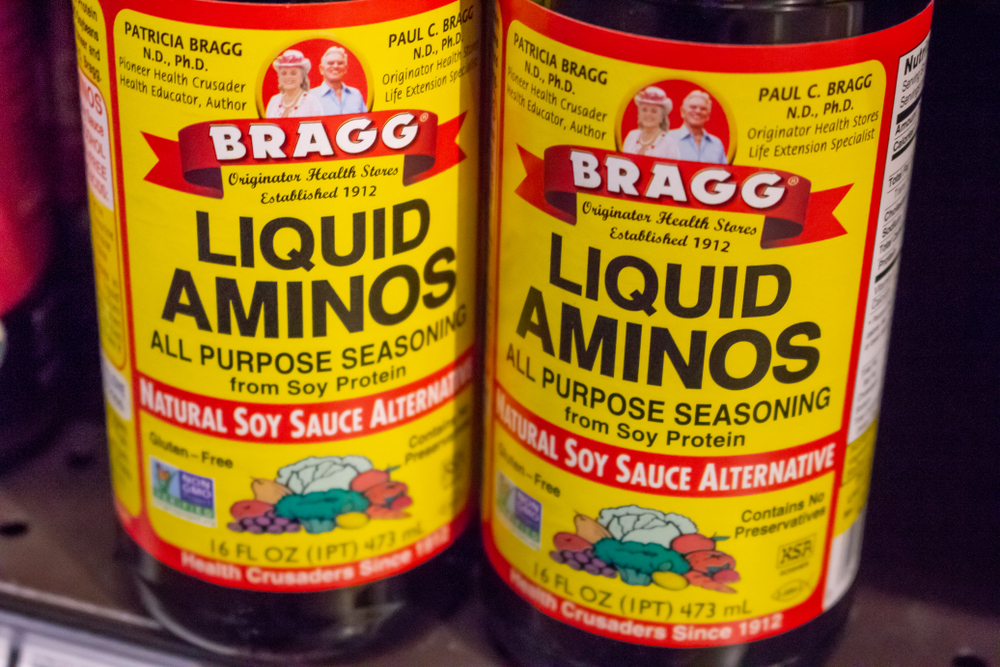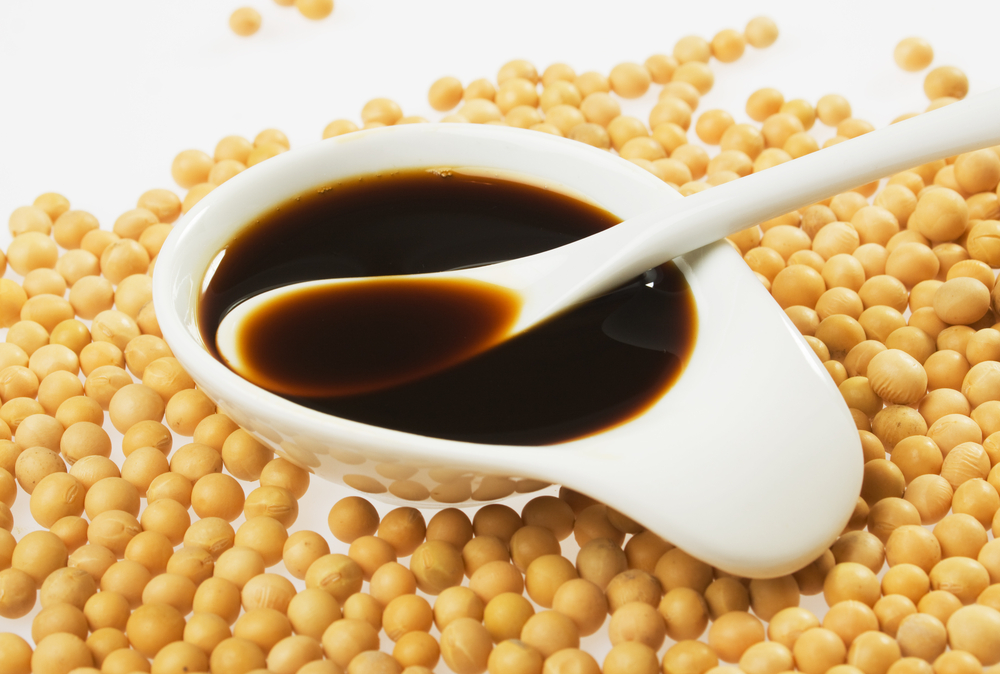When you go to look at soy sauce substitutes, chances are you’re going to see two main options come up, liquid aminos and coconut aminos. They are both listed as a substitute, but few websites actually offer the differences between the two.
The main differences between liquid aminos and coconut aminos are the flavor and the texture. The flavor of coconut aminos is slightly sweet whereas the flavor of liquid aminos has no sweetness. Coconut aminos can also have a slightly thicker texture depending on the type that you purchase.
Understanding the differences and similarities between coconut aminos and liquid aminos is essential for picking the right product for your recipe. After all, the last thing you want is to end up with a steak that is crystallized in sugar.
Are Liquid Aminos the Same as Coconut Aminos?
When you go to the grocery store, coconut aminos are frequently stocked right beside liquid aminos. This can make it very easy to accidentally grab one in place of the other and if you do, are they close enough to the same thing that you can use them instead?
Although they are similar and often fulfill a similar purpose, they are technically different sauces that have a different bases and slightly different flavors. In certain recipes, you will be able to use them in place of each other, but it will depend on exactly what you are trying to prepare. In some recipes, substituting these two ingredients would negatively impact the flavor of the recipe.
Liquid aminos are typically made from soy that is not fermented and has some salt and other ingredients added in. This gives it a very salty taste and it is pretty savory with a flavor that is relatively similar to soy sauce.
In contrast, coconut aminos are made from coconut sap that has gone through a fermentation process. It also has some salt added to it to give it a similar soy sauce flavor that you can use as a marinade or on toppings. The main difference between the flavor of coconut aminos and liquid aminos is that coconut aminos are slightly sweeter.
This makes them popular in dishes with deeper flavors where the sugar can help to enhance the other flavors.

Coconut Aminos and Liquid Aminos Overview
Do decide which one you are going to use, it is important to understand the similarities and differences between the two. Overall, coconut aminos and liquid aminos are very similar to each other. After all, they are both sauces that have salty flavors and are typically used in marinades or to top rice-based dishes.
Coconut Aminos
Taste
Sometimes, the flavor of coconut aminos can be difficult to describe, especially if you’ve never had soy sauce which it is frequently described as.
Coconut aminos have a salty and savory flavor that is very similar to that of soy sauce. It has a good amount of umami flavor which makes it a good option for vegetarian dishes that are missing out on that “meaty” flavor. This can help to make the veggie-based dishes more satisfying than you would expect without having to add any meatiness.
The main flavor factor that you’ll need to consider when using coconut aminos is that they are slightly sweet. For some recipes, like curries or stir fry, this may not affect the recipe too much because they normally contain a small amount of sugar. However, for recipes where you are looking to completely avoid sweetness, this could be a problem.
Texture
The exact texture of your coconut aminos will depend on the brand that you purchase. Some brands sell coconut aminos as more of a soy sauce substitute and it will have a very thin texture that can easily be drizzled onto food. It is mostly water-based and will rapidly absorb into foods like rice.
Other brands sell their coconut aminos as more of a syrup. This version is typically sweeter and has a much more intense flavor than the more liquid-like type. Since it is cooked down more, it will typically be very thick and not run out easily. If you want to use it to top food, it will be more of a drizzle and won’t absorb directly into the food.
For this reason, the thicker version of this product will most frequently be used as a base in sauces or soup. This is because you won’t have to add as much of the product for it to give your meal the intense coconut aminos flavor that you’re looking for.

Health
One of the most common questions that consumers ask when they are trying to decide between coconut aminos and other sauces is which is the healthiest. Since coconut aminos are made from tree sap, they do not have a ton of other ingredients and seasonings, like added sodium. This can make them a healthier option for people who are trying to avoid excess salt.
Liquid Aminos
Taste
Liquid aminos are described as having a flavor that is very similar to soy sauce, but even tangier and with more of a more complex flavor. This means that it can add a lot more depth to your dishes without needing to go out and purchase a bunch of different spices. With just one sauce, you can elevate your dish to a whole new level and bring in lots of complex flavors.
One of the defining flavors in liquid aminos, just like with coconut aminos, is the umami flavor. This is a Japanese word for a flavor that is best described as meaty. It is the flavor that is frequently lacking in vegetarian dishes but is difficult for many people to describe.
Some of the vegetarian ingredients that can provide your dish with this missing umami flavor are mushrooms and, of course, liquid aminos.
This sauce also contains plenty of salt making it a great choice if you want to add salt to your recipe, just in a way that will allow you to add extra flavor with the salt.
Texture
Depending on the type of coconut aminos that you buy, they will likely have a very similar texture to that of liquid aminos. Liquid aminos are a liquid sauce, much like soy sauce, and are made primarily from water. This means that it is easy to use to top recipes and will rapidly absorb into grains like rice and quinoa.
Some brands of liquid aminos may be slightly thicker, but generally speaking, they will retain their thin quality. This helps to make it super easy to pour and overall easy to use.
Health
Healthwise, liquid aminos are generally considered one of the healthier substitutes for soy sauce. Soy sauce generally contains a lot of sodium and while you can purchase low-sodium versions, this is still a concern for many people causing them to seek a better version.
Liquid aminos usually contain slightly less salt than soy sauce, but this will depend on the brand that you buy and what soy sauce you’re comparing it to.

Liquid aminos also offer essential amino acids that your body needs to stay healthy. If you are regularly consuming liquid aminos, you will be receiving lots of great ingredients that your body requires.
Just make sure to watch it on the sodium content because if you are consuming enough to fulfill your amino acid requirements, chances are you’re going overboard with the sodium.
What is the Difference Between Coconut Aminos and Liquid Aminos?
Now, the answer to the question that everyone has been waiting for. What is the difference between coconut aminos and liquid aminos?
Although the products are very similar overall, coming from a similar process and offering flavor profiles that are reminiscent of one another, they are different. You can see the differences between the two in the flavor of the products and their texture.
Sweetness
The main difference that you will detect if you compare these products is their flavor, more specifically, their level of sweetness.
Since coconut aminos are made from coconut tree sap, they have a much sweeter flavor than that of liquid aminos. Overall, this flavor is still relatively insignificant, but it should be considered to make sure that the sweetness won’t ruin your recipe.
In contrast, liquid aminos are made from soy that has not been fermented, making it different than soy sauce. Soy does not have a naturally sweet flavor and since no sugar is added, you won’t detect any sweetness when you taste liquid aminos.
Texture
Another pretty obvious difference between the two is in their texture. If you take a bottle of liquid aminos and tip it upside down, the contents of the bottle will immediately come rushing out. This is because the texture of liquid aminos is very runny and pretty much like water.
You may find that the same thing is true with coconut aminos, but that isn’t always the case. Coconut aminos can either come in their liquid form, or you can find them in a thicker more syrup-like form. When they are in this form, coconut aminos can also be a great substitute for dark soy sauce.
The syrup is created by boiling down the sap a little bit more than you normally would. This helps to intensify the flavor of the sauce and make it more suitable for mixing into liquids to make broth. If you were to use the liquid version to make broth, you will need to use the entire bottle to achieve the same level of flavor.

Can You Replace Liquid Aminos with Coconut Aminos and Vice Versa?
Now for the final question, can you replace liquid aminos with coconut aminos? The answer to this is yes, but only sometimes.
Remember, overall these two sauces have a very similar flavor that is salty and savory, with plenty of umami flavor to save all of your vegetarian dishes. This means that in many cases, you can use them as substitutes for one another. However, there are some instances when you can’t.
If a recipe calls for coconut aminos, chances are it is relying on the sweetness of coconut aminos to provide a decent amount of flavor. This means that if you add liquid aminos in its place, you won’t get the exact flavor that the recipe is looking for.
The same goes for liquid aminos. The recipe may be counting on the fact that liquid aminos don’t have any sweetness to them and if you add coconut aminos instead, it could throw all the flavors out of balance.
For this reason, liquid aminos can almost always be substituted for coconut aminos, just with a bit of extra sugar added to the recipe. However, if you want to avoid sweetness, coconut aminos should never be used in place of liquid aminos.
Related post: Bosco Vs Hershey’s Chocolate Syrup
Final Thoughts
Before adding either of these sauces to your next recipe, make sure to consider the flavor you are looking to add.
If you want to add a sauce with plenty of salt and a nice tanginess, go for liquid aminos. This thin sauce is very similar to soy sauce but is much healthier with plenty of essential amino acids to improve your health.
If you’re looking to add flavor and sweetness to your favorite coconut curry, try using coconut aminos. Coconut aminos have a sweetness that other sauces do not have without containing any excess sugar. However, they are not near as salty so you may need to add an extra pinch of salt to compensate for this.







